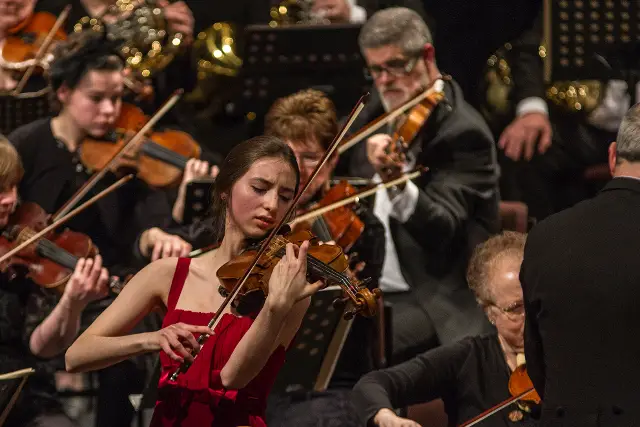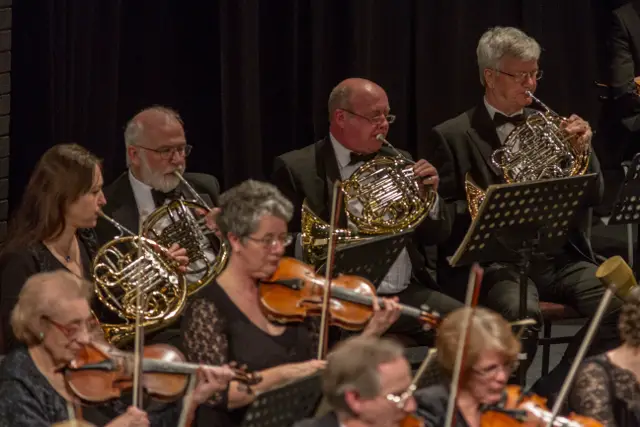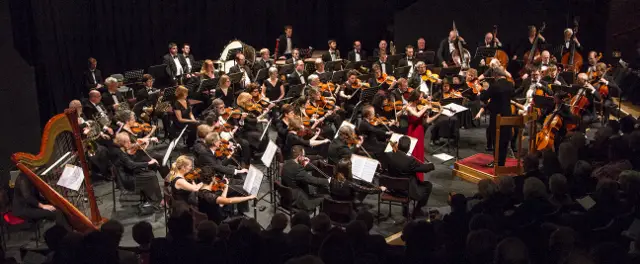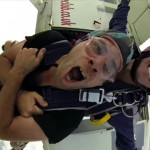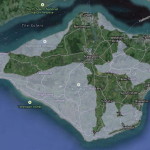Our thanks to Jonathan Dodd for his latest review of the Isle of Wight Symphony Orchestra. Ed
Last Saturday the Isle of Wight Symphony Orchestra played the second concert of this season. They featured English music from the last century, an overture by Vaughan Williams, a symphony by Elgar, and a Viola concerto by York Bowen. Each piece was very different and altogether, they made up a very diverse and somehow very English programme.
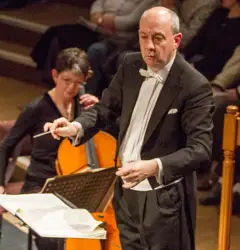 Jonathan Butcher, the conductor, addressed the audience in his usual welcoming and jovial manner, and apologised for not doing so in the previous concert. He explained he’ lost his voice, and promised not to do so again. His introductions to the music are always enjoyed very much by the audience, who respond vigorously to his descriptions and stories.
Jonathan Butcher, the conductor, addressed the audience in his usual welcoming and jovial manner, and apologised for not doing so in the previous concert. He explained he’ lost his voice, and promised not to do so again. His introductions to the music are always enjoyed very much by the audience, who respond vigorously to his descriptions and stories.
Wasps
The first piece was an overture by Ralph Vaughan Williams, called ‘The Wasps’. He wrote it as incidental music for a performance of the play of the same name by Aristophanes in Cambridge in 1908, in which the Chorus played the part of wasps, commenting acidly on the goings-on in the ancient Greek courts. At this point Vaughan Williams hadn’t yet written any of his great works, and was struggling with his first symphony.
I can imagine he enjoyed writing this light and easy piece in the middle of all that. It did indeed start with a sound very like a swarm of wasps. I almost shut my eyes and imagined a summer afternoon and the drone of wasps moving around in their peculiar meandering way. This was a delightful piece, full of tunes and effects, and as always it was beautifully played.
Violas
Being something of a beginner at the art of appreciating classical music, I was unaware of the differences between violas and violins, and I was wondering why there are lots of works for the violin, and many famous violinists, but hardly anything for violas. At first I thought it was because violists are shy and retiring characters, then I decided that they play a role more like the rhythm guitar in a rock band, but when I googled it, I was shocked to find there are a huge number of viola jokes, most of which I couldn’t repeat here.
So, still in the dark about why there are hardly any concertos for violists, I prepared to be surprised, and I was actually bowled over by the performance by Lorena Cantó Woltèche of the Viola Concerto by York Bowen. The viola is larger than a violin, and appeared even larger and more imposing against her slight frame and red dress, but from the first note she produced a lovely sound that I found more mellow and rounded than that of a violin, as well as having a slightly deeper voice in a lower range.
I liked the way the orchestra and the viola seemed to be following and echoing each other, as if in conversation, and then she would launch into a piece of amazingly bravura solo playing. The soloist and orchestra were obviously enjoying performing together, and their rapport was wonderful. When I discovered that she is only 18 and playing the viola that belonged to Yehudi Menuhin I was even more astonished. I shall follow her career with interest. Bravo.
Elgar
After the interval, the first notes of Edward Elgar’s Second Symphony rang out. It is a large and serious work, requiring a lot of concentration and skill on the part of all the musicians in the orchestra. My experience of Elgar had previously been made up of his more well-known works, and I was unfamiliar with Elgar in this mood, alternatively sombre and descriptive, with many themes and rhythms.
The orchestra attacked it with precision and great skill, the music rolled and thundered, and it was a very satisfying piece to bring the concert to an end. It was grand and dignified and perhaps elegiac, with an entirely unexpected quiet ending. I shall need to listen to it again.
Europeans
The next concert is on 21st March, and features some Tchaikovsky from Eugene Onegin, some elegies by Grieg, a piece by Holst, and Dvořák’s Symphonic Variations, as well as a flute concerto by Ibden. Some familiar things and composers, and some I don’t know yet. Excellent.
I can’t wait. See you there.
Images: © With kind permission of Allan Marsh

